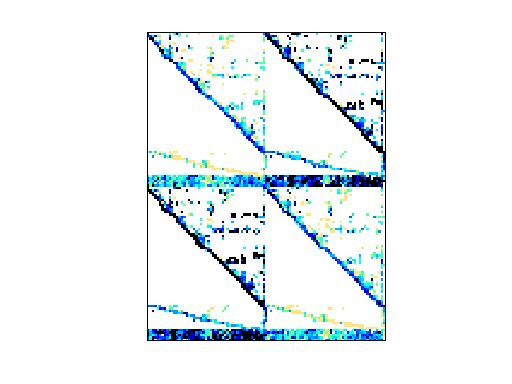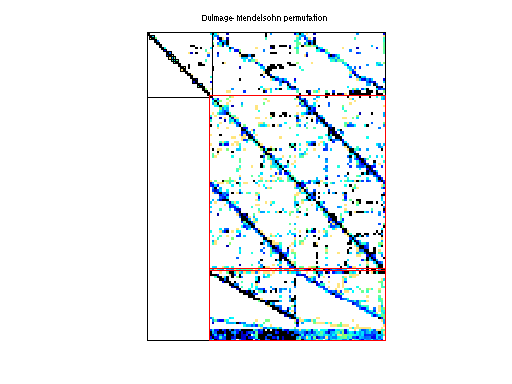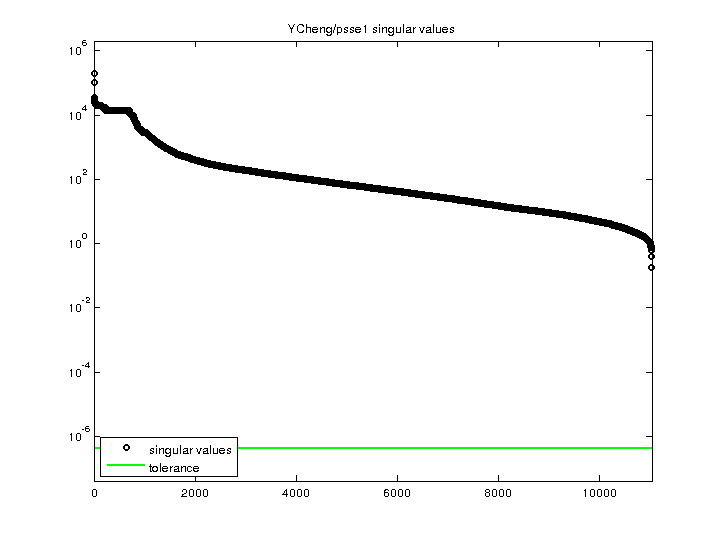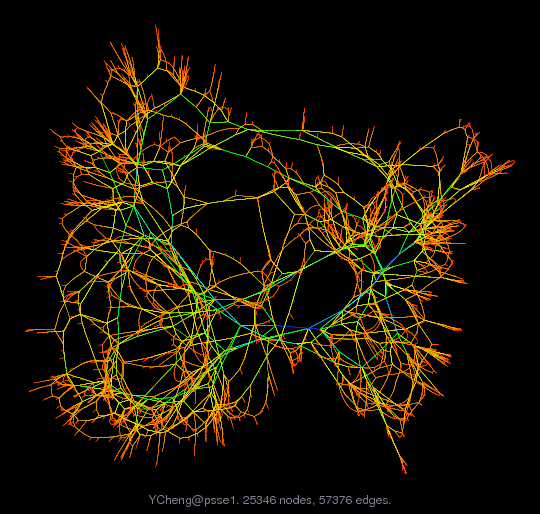YCheng/psse1
Power system state simulation matrix, Yunzhi Cheng, UT Arlington
| Name |
psse1 |
| Group |
YCheng |
| Matrix ID |
1871 |
|
Num Rows
|
14,318 |
|
Num Cols
|
11,028 |
|
Nonzeros
|
57,376 |
|
Pattern Entries
|
57,376 |
|
Kind
|
Power Network Problem |
|
Symmetric
|
No |
|
Date
|
2007 |
|
Author
|
Y. Cheng |
|
Editor
|
T. Davis |
| Structural Rank |
11,028 |
| Structural Rank Full |
true |
|
Num Dmperm Blocks
|
1,722 |
|
Strongly Connect Components
|
1 |
|
Num Explicit Zeros
|
0 |
|
Pattern Symmetry
|
0% |
|
Numeric Symmetry
|
0% |
|
Cholesky Candidate
|
no |
|
Positive Definite
|
no |
|
Type
|
real |
| SVD Statistics |
| Matrix Norm |
2.001254e+05 |
| Minimum Singular Value |
1.779262e-01 |
| Condition Number |
1.124767e+06
|
| Rank |
11,028 |
| sprank(A)-rank(A) |
0 |
| Null Space Dimension |
0 |
| Full Numerical Rank? |
yes |
| Download Singular Values |
MATLAB
|
| Download |
MATLAB
Rutherford Boeing
Matrix Market
|
| Notes |
Power system state simulation matrix from Yunzhi Cheng, UT Arlington.
In MATLAB, the solution to x=A\b is desired, but this can be slow in
MATLAB 7.3 because of the speed of sparse QR as compared to sparse
Cholesky. Using x=(A'*A)\(A'*b) is faster, but of course yields
slightly less accurate (but still acceptable) results. Note that an
initial guess to the solution is provided, for use by an iterative
method. However, sparse Cholesky with an AMD ordering is very fast
for this matrix and thus iterative methods are unlikely to be
competitive. In MATLAB 7.3 on a 3.2 Ghz Pentium 4 desktop,
x=(A'*A)\(A'*b) takes 0.05 seconds.
|



